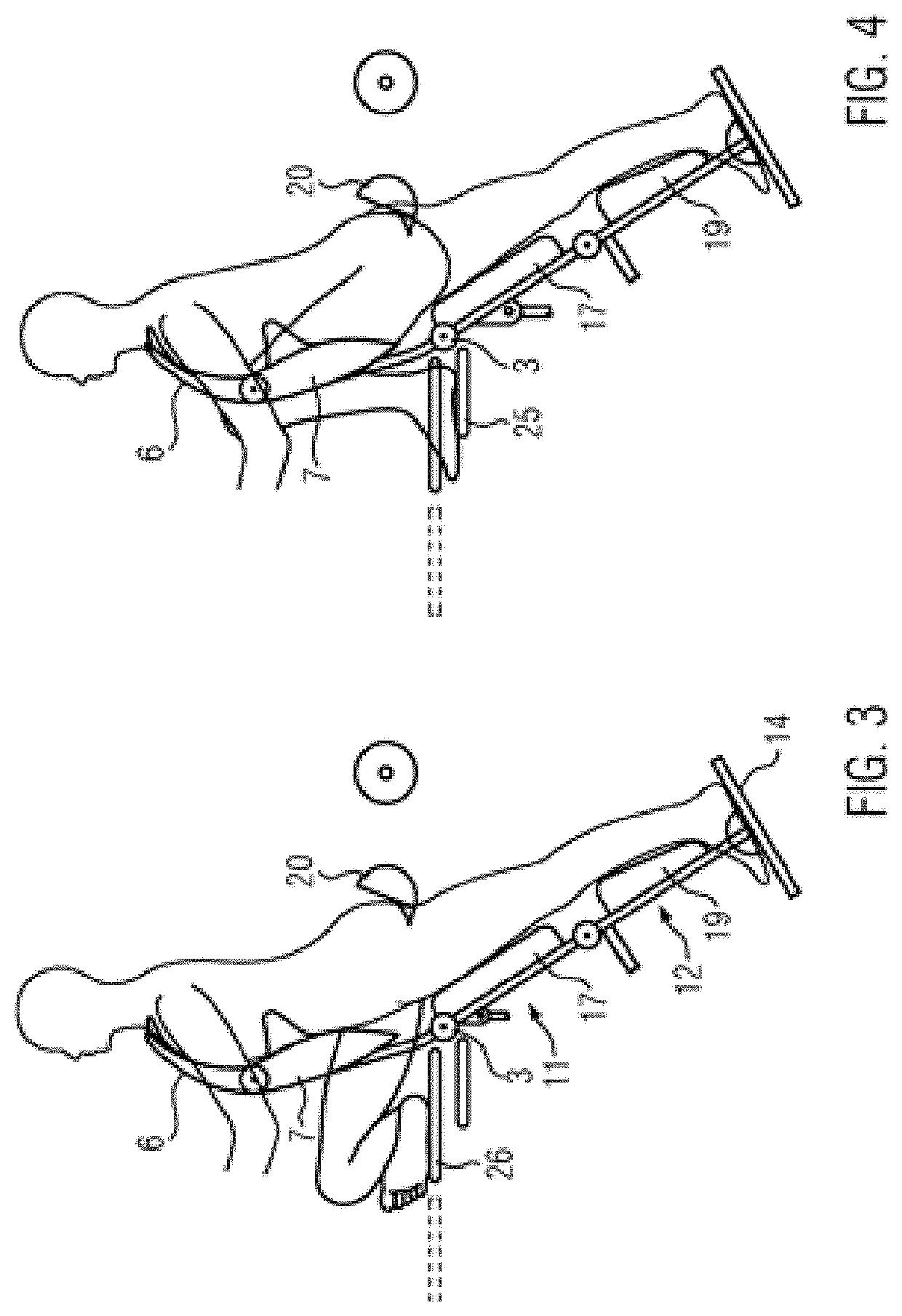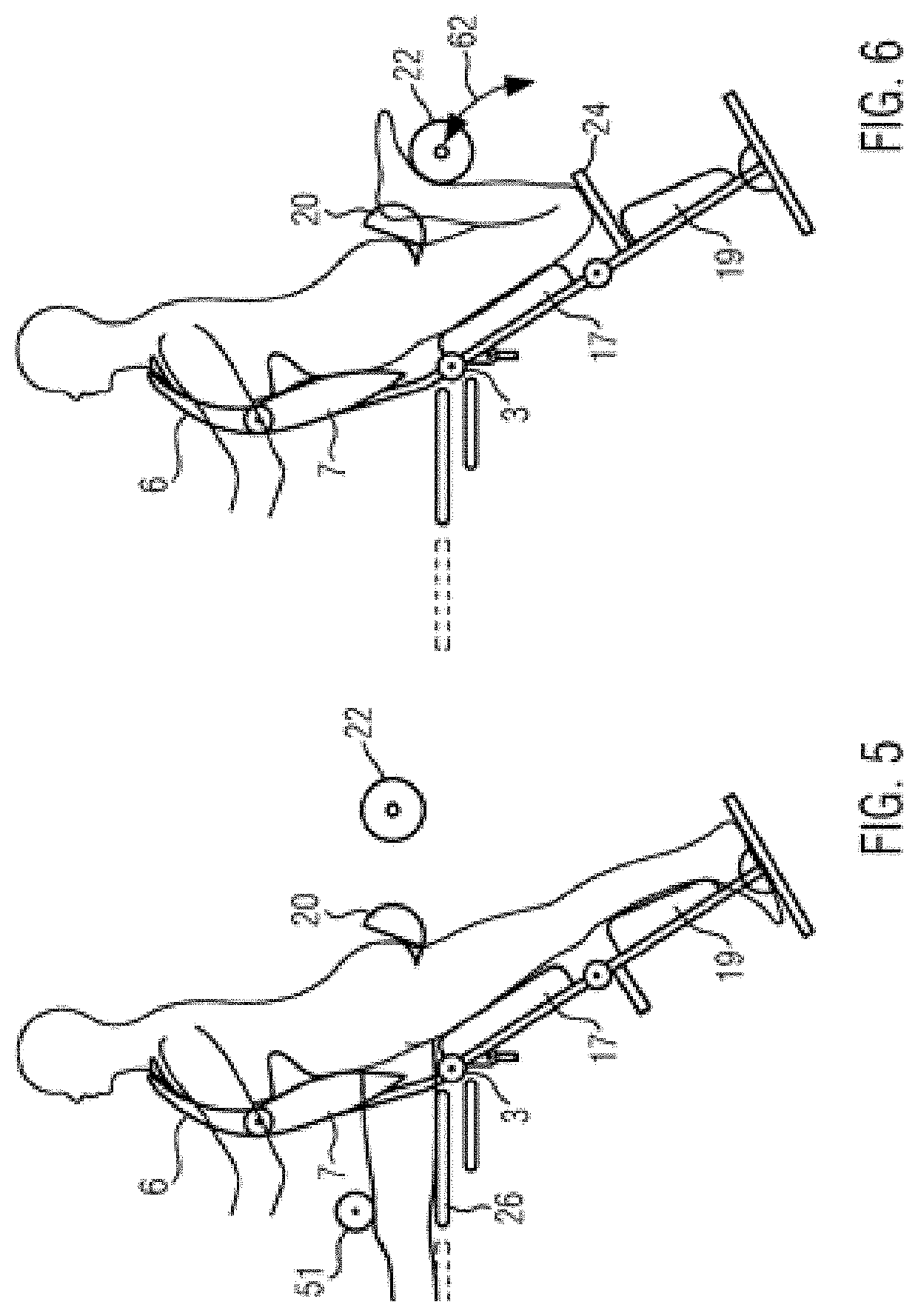Chair, pressing device
a pressing device and chair technology, applied in the field of chairs, can solve the problems of shortened front thigh and buttock muscles, damage to the spine, hip and knee joints, and increased pain in the back of the thigh and buttocks, and achieve the effects of simple and safe application, convenient and simplified application, and improved comfor
- Summary
- Abstract
- Description
- Claims
- Application Information
AI Technical Summary
Benefits of technology
Problems solved by technology
Method used
Image
Examples
Embodiment Construction
[0090]All graphic representations are to be understood schematically. Directional and positional designations are used in accordance with the usual anatomical names and, unless otherwise indicated, refer to a body placed on the chair in the prone position. A longitudinal direction is basically understood as a direction running along the stretched spine or between the atlas and sacrum of the body placed in prone position on the chair according to the invention. However, a longitudinal direction can also be understood as a local directional indication of a direction that runs approximately through line II-II in FIG. 1 in the drawing plane. A transverse direction is understood to be a direction that runs through both hip joints or both shoulder joints of the body in prone position on the chair according to the invention and is perpendicular to the drawing plane in FIG. 1. A sagittal direction is understood to be a direction perpendicular to the longitudinal direction and the transverse...
PUM
 Login to View More
Login to View More Abstract
Description
Claims
Application Information
 Login to View More
Login to View More - R&D
- Intellectual Property
- Life Sciences
- Materials
- Tech Scout
- Unparalleled Data Quality
- Higher Quality Content
- 60% Fewer Hallucinations
Browse by: Latest US Patents, China's latest patents, Technical Efficacy Thesaurus, Application Domain, Technology Topic, Popular Technical Reports.
© 2025 PatSnap. All rights reserved.Legal|Privacy policy|Modern Slavery Act Transparency Statement|Sitemap|About US| Contact US: help@patsnap.com



